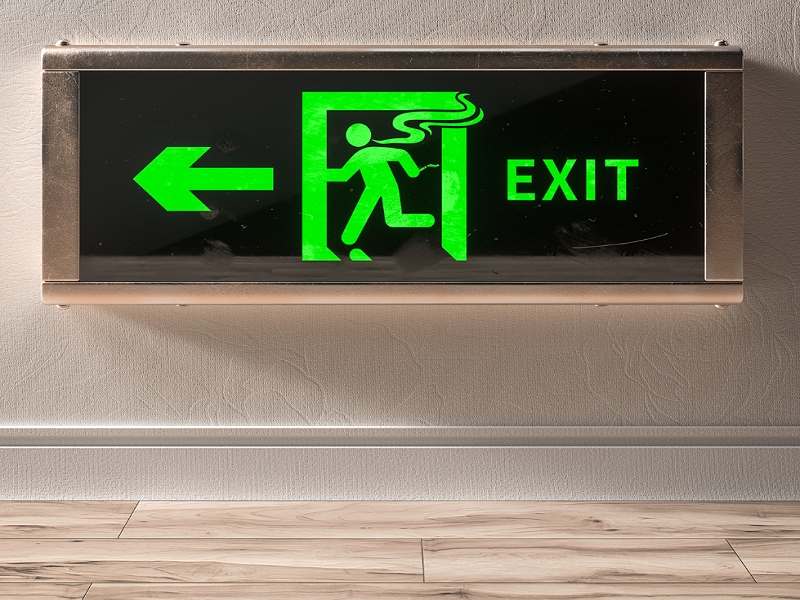Emergency lights are a crucial component of any building’s safety infrastructure. In times of crisis, such as power outages, fires, or natural disasters, these lights provide illumination to guide people to safety. However, for emergency lights to be effective, they must be operational when they are needed the most. This begs the question: Do emergency lights have backup batteries? In this article, we will explore the importance of backup batteries in emergency lighting systems and how they ensure the continued functionality of these vital safety devices.
The Role of Emergency Lights
Emergency lights serve several critical purposes. They are designed to:
- Illuminate Exit Paths: In the event of a power outage or other emergency that causes darkness, emergency lights help occupants find their way to exits, stairwells, and evacuation routes.
- Ensure Visibility of Safety Equipment: Emergency lights also ensure that fire extinguishers, first-aid stations, and other safety equipment are visible and accessible during emergencies.
- Prevent Panic: Adequate lighting can reduce panic and confusion during emergency situations, helping people remain calm and follow evacuation procedures.
- Comply with Regulations: In many countries, building codes and safety regulations mandate the installation of emergency lighting systems to protect occupants in case of emergencies.
The Need for Backup Batteries
Emergency lights are typically connected to a building’s main electrical supply. However, during power outages caused by fires, earthquakes, severe storms, or other emergencies, the primary power source may fail. To ensure that emergency lights continue to function in such situations, they are equipped with backup batteries.
Here are some key reasons why backup batteries are essential for emergency lights:
- Power Continuity: Backup batteries provide a secondary power source, ensuring that emergency lights remain operational even when the main electrical supply is disrupted.
- Reliability: Emergency lighting systems with backup batteries can be relied upon to provide consistent illumination during critical moments.
- Compliance: Many building codes and safety regulations require that emergency lights have backup power sources to ensure building occupants’ safety.
- Extended Operation: Backup batteries can sustain emergency lights for an extended period, allowing time for evacuation and emergency response.
Types of Backup Batteries
Several types of backup batteries are commonly used in emergency lighting systems:
- Sealed Lead-Acid Batteries: These are the most common batteries used in emergency lights. They are affordable, reliable, and have a relatively long service life.
- Nickel-Cadmium (NiCd) Batteries: NiCd batteries are known for their ability to deliver high currents, making them suitable for emergency lighting applications. They are also durable and have a long life cycle.
- Nickel-Metal Hydride (NiMH) Batteries: NiMH batteries offer a compromise between NiCd and newer lithium-ion batteries. They are rechargeable and have a decent service life.
- Lithium-Ion Batteries: While less common due to cost, lithium-ion batteries offer high energy density, longer life cycles, and reduced maintenance requirements.
Testing and Maintenance
To ensure the effectiveness of emergency lights and their backup batteries, regular testing and maintenance are essential. Building owners and managers should establish a maintenance schedule to:
- Conduct Monthly Testing: Periodic testing helps identify issues with the emergency lighting system promptly. This can include a monthly functional test and an annual 90-minute battery discharge test, as per industry standards.
- Replace Batteries When Necessary: Backup batteries have a limited lifespan and will eventually need replacement. Regular maintenance checks can determine when replacement is required.
- Keep Records: Keeping detailed records of maintenance and testing ensures compliance with safety regulations and provides a history of the system’s performance.
Conclusion
Emergency lights play a crucial role in ensuring the safety of building occupants during emergencies. Backup batteries are a fundamental component of these lights, providing a secondary power source to ensure their continuous operation when the primary power supply fails. Understanding the importance of backup batteries and adhering to a proper maintenance schedule is essential for building owners and managers to meet safety regulations and ensure the reliability of their emergency lighting systems. In times of crisis, the presence of well-maintained emergency lights with backup batteries can be the difference between chaos and a safe evacuation.


